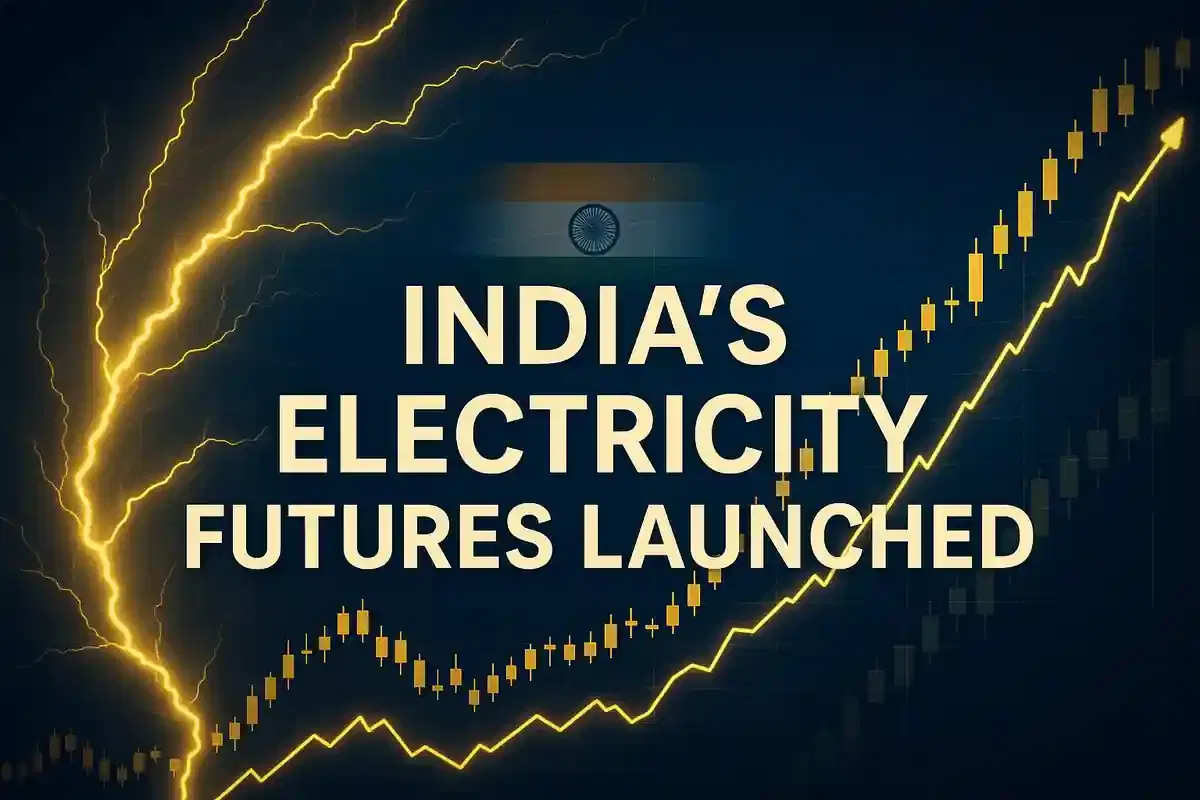India Launches Electricity Futures on NSE to Boost Power Market Stability
Commodities
|
29th October 2025, 2:00 PM

▶
Short Description :
Detailed Coverage :
The National Stock Exchange of India (NSE) introduced monthly electricity futures contracts in July 2025, marking a significant development for the nation's power market. This new product allows for the trading of standardized electricity price exposures on a national level through a transparent, risk-managed platform. The contracts are cash-settled, denominated in Indian Rupees per megawatt-hour (mWh), and feature narrow tick sizes and clear lot units, making them suitable for both corporate hedgers and financial investors seeking to manage price volatility.
The exchange has implemented liquidity enhancement mechanisms and designated market makers to ensure orderly trading. Initial trading sessions have shown encouraging participation from utilities, power generators, and large industrial users, all aiming to hedge their exposure in an increasingly unpredictable electricity market. India's power sector, with over 440 GW of installed capacity, faces challenges including significant debt and losses carried by distribution companies (discoms), and balancing the grid with a growing share of intermittent renewable energy sources.
Impact: This development is expected to significantly improve risk management and price discovery within India's power sector. It will enable generators to lock in revenues, and consumers to hedge against price surges, thereby enhancing overall market resilience and attracting further investment. The futures market offers a crucial tool to navigate the complexities of energy price fluctuations and financial distress in the sector. Rating: 8/10
Difficult Terms: * Futures: A financial contract obligating the buyer to purchase an asset or the seller to sell an asset at a predetermined future date and price. * Derivative: A financial contract whose value is derived from an underlying asset, group of assets, or benchmark. * Hedging: A risk management strategy used to offset potential losses or gains that may be incurred by a companion investment or position. * Discoms: Distribution companies responsible for delivering electricity to end consumers. * PPAs (Power Purchase Agreements): Contracts between electricity generators and buyers (like discoms) that set the price and quantity of electricity for a specified period. * ACS-ARR (Average Cost of Supply-Average Revenue Realisation): A metric indicating the difference between the cost of supplying electricity and the revenue earned per unit, showing financial losses if ACS > ARR. * Liquidity: The ease with which an asset can be bought or sold in the market without significantly affecting its price. * Basis Risk: The risk that the price of a futures contract will not move perfectly in line with the price of the underlying commodity or asset it is hedging. * Counterparty Risk: The risk that one party in a financial contract will default on their obligations.